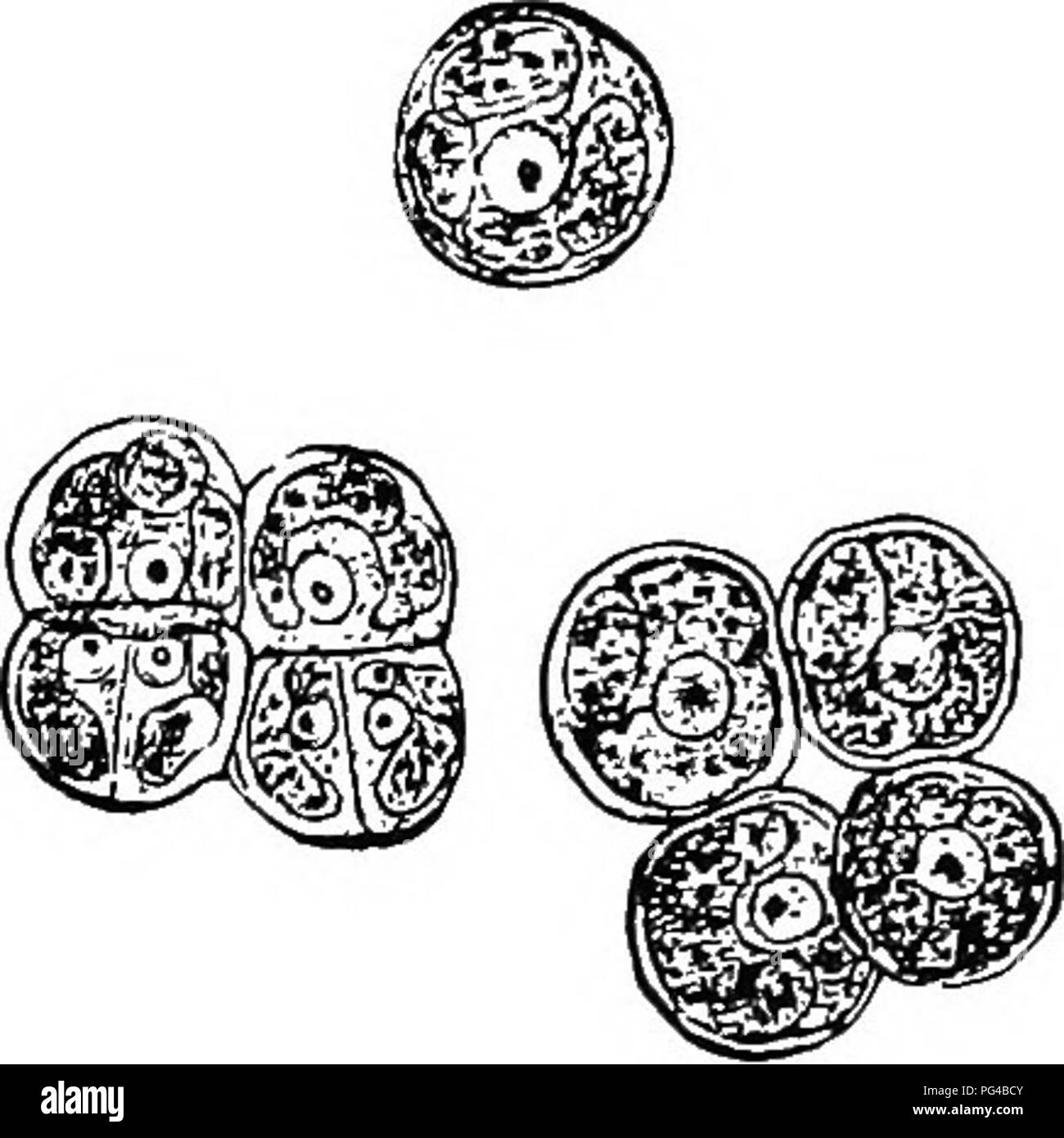. Botany for agricultural students . Botany. PLEUROCOCCUS 307 occurs within the hollow of the sphere. The spore formed from the fusion, now known as an oospore (meaning eggspore), forms a new colony upon germination. There is much advantage gained by differentiating gametes. The egg, owing to its size and loss of motility, can store much food for the next generation. The smallness of sperms makes it possible for large numbers of them to be produced, and promotes their movements through water. In summarizing the Volvocales, the following features are the notable ones. The plant body consists of

Image details
Contributor:
Central Historic Books / Alamy Stock PhotoImage ID:
PG4BCYFile size:
7.2 MB (259.4 KB Compressed download)Releases:
Model - no | Property - noDo I need a release?Dimensions:
1581 x 1581 px | 26.8 x 26.8 cm | 10.5 x 10.5 inches | 150dpiMore information:
This image is a public domain image, which means either that copyright has expired in the image or the copyright holder has waived their copyright. Alamy charges you a fee for access to the high resolution copy of the image.
This image could have imperfections as it’s either historical or reportage.
. Botany for agricultural students . Botany. PLEUROCOCCUS 307 occurs within the hollow of the sphere. The spore formed from the fusion, now known as an oospore (meaning eggspore), forms a new colony upon germination. There is much advantage gained by differentiating gametes. The egg, owing to its size and loss of motility, can store much food for the next generation. The smallness of sperms makes it possible for large numbers of them to be produced, and promotes their movements through water. In summarizing the Volvocales, the following features are the notable ones. The plant body consists of a single motile cell having a chloroplast and well-defined nucleus and cytoplasm. Some swim about independently, but the formation of colonies is a marked feature of the group, and the colonies range from simple to complex ones. By the division of cells new individuals and new colonies are formed. Sexual reproduction advances from isogamy to heterogamy. As in the Blue-green Algae, the forma- tion of colonies is a step toward the formation of multicellular in- dividuals. Unicellular Non-motile Green Algae (Protococcales). — In con- trast to the Volvocales, the absence of cilia, except on reproductive cells, is a notable feature of this group. Some plants of this order are very common on damp soil, walls, and oh the bark of trees, where they are often exposed to long periods of drought. Most of the group are aquatic and occur mainly in fresh water. Some enter into the forma- tion of Lichens. Others are endo- phytic, living in the intercellular spaces of other plants, and some give the green color to certain animals, such as the hydra and fresh-water sponge, which eat them. They show considerable variation in their habit of form- ing colonies and in methods of reproduction. Pleurococcus. — Pleurococcus (Fig. 262), often called Protococ- cus, is the simplest plant of the group, and may be regarded as. Fig. 262.—Pleurococcus vul- garis. Above, a single plant consisting of a s